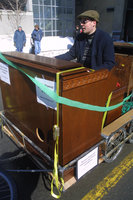
Ok, so I don't know where the genesis of this idea came from... but Moz and Daniel Kavenaugh are partly to blame... ;-)
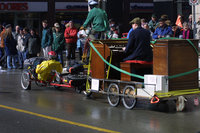

|
We won our first award at The
Irish Society St. Patrick Day
Parade, March 15 2003.
Ok, so I don't know where the genesis of this idea came from... but Moz and Daniel Kavenaugh are partly to blame... ;-) |

|
It came up at the beer .sig after a local Linux users' group meeting in Ottawa while talking to MKP after Willy's kernel presentation... We started with back-of-the-napkin calculations to see if it was even feasible with respect to weight, size and power. All three seemed like a challenge -- but within reach. The idea simmered for a while... then came up again after the February meeting... and again after the March meeting.
By this time, we had a week and a half left to do something about it for the St. Patty's Day parade. With SCJody and Vic's help, I started to sketch out a couple of potential designs. I also spoke to Daniel Kavenaugh of Organic Engines and Carey Chen of Urbane Cyclist both on the telephone to pick their brains. Both were very helpful. Daniel helped me with tubing sizes and subsequently sent me an unsolicited but very welcome rough drawing. Juergen and I picked up 4 used heavy duty BMX front wheels at Dave Gibson's Bike Dump, 4 ratchet tie-down straps from Princess Auto, and had a look around Metal Supermarket on Wednesday. Carey sent 8 tyres with Juergen the weekend before that I had not planned to use on the trailer, but it became obvious about Wednesday after construction had started, that I should. I ended up using 4 Tioga Competition Pool 20"x1.75" slick tyres somewhat accidentally and arbitrarily pumped up to 60 PSI. It might have been better to pump them up to 70 or 80 PSI, but it was fine the way they were in terms of a compromise between the negligible rolling resistance they had and the excellent cushioning they provided. These are the same tyres that Ian Sims swears by, pre-installed on all Greenspeed trikes, of which the towing vehicle is one.
I started with the drawings from the pub and drew up a preliminary scale drawing to get a sense of it without having exact dimensions for the organ and MKP was not anywhere near them to measure them himself nor to let me in to do so. MKP and I exchanged email about it which helped, but I wanted to be sure of the dimensions, so I had to wait until the Sunday afternoon when he got back to measure it myself. That resulted in a much more accurate 2nd iteration of the drawing that was used almost exactly.
I made one email order to Metal Supermarket on the Monday at 04:20, less than 3 hours before they openned. After they spent some time converting it from metric to imperial units, I did some serious rethinking of the exact materials since they didn't have enough stock of some of what I requested. Juergen was helpful here since he had experience purchasing and building with that material. I resent my metal list to Adry and Kevin just over 24 hours later.
Juergen and I picked up the CAN$200 worth of cut metal and a new set of UPS batteries on Tuesday afternoon and started building. The pre-cut lengths made things much easier to assemble. Jody and Vic cut the vertical supports and the dropouts. Progress can be seen in the links to photos below.
Photos:
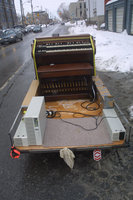 MKP's selection of photos he posted to hamtech at the url mkp.net/stpats
MKP's selection of photos he posted to hamtech at the url mkp.net/stpats
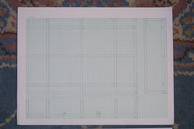 the preliminary drawings
the preliminary drawings 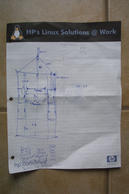 the updated drawings
the updated drawings
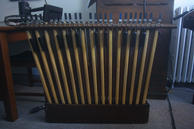 the payload
the payload
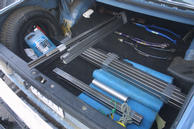 fetch cut metal
fetch cut metal
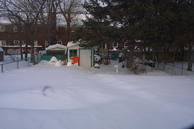 start assembling base
start assembling base
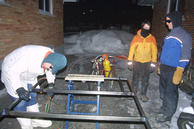 finish welding base
finish welding base
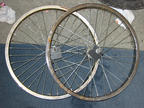 add dropouts
add dropouts
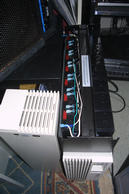 test/condition new and old batteries in UPS
test/condition new and old batteries in UPS
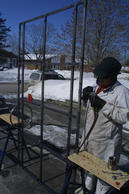 complete dropouts
complete dropouts
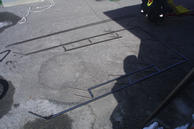 start guardrail
start guardrail
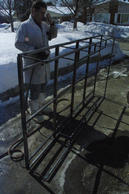 finish guardrail
finish guardrail
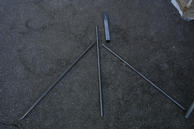 make hitch (here are previous photos of the trike half of the hitch
make hitch (here are previous photos of the trike half of the hitch
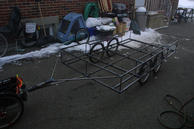 fetch plywood bed
fetch plywood bed
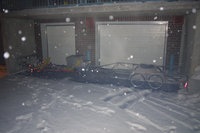 ride home in the snow
ride home in the snow
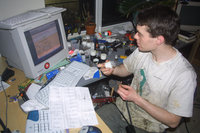 wire up UPS
wire up UPS
 load organ
load organ
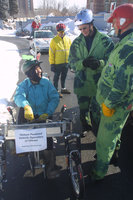 St. Patty's Day parade
St. Patty's Day parade
 St. Patty's Day parade (Vic's pics)
St. Patty's Day parade (Vic's pics)
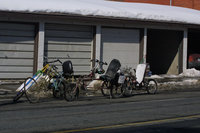 unload organ
unload organ
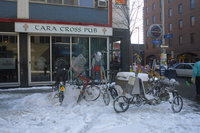 debrief and future planning in local pub
debrief and future planning in local pub
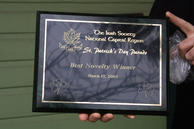 the plaque we won for "Best Novelty Winner"
the plaque we won for "Best Novelty Winner"
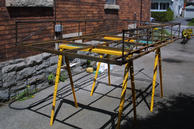 trailer detail during paint prepping
trailer detail during paint prepping
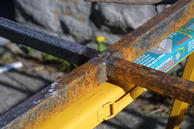 trailer detail during paint prepping
trailer detail during paint prepping
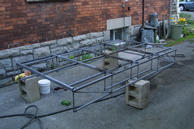 trailer detail during paint prepping
trailer detail during paint prepping
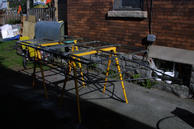 trailer detail during painting
trailer detail during painting
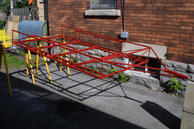 trailer detail during painting
trailer detail during painting
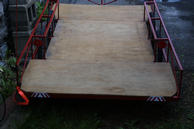 trailer detail after painting
trailer detail after painting
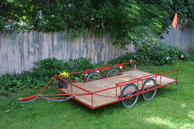 completed trailer
completed trailer
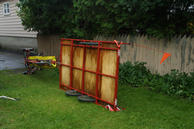 views of trailer and trike on their side and close-ups of the hitch
views of trailer and trike on their side and close-ups of the hitch
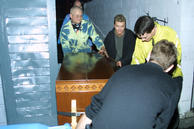 a repeat gig at Hallowe'en
a repeat gig at Hallowe'en
 Hallowe'en (Vic's pics)
Hallowe'en (Vic's pics)
 full bare rig
full bare rig
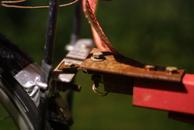 hitch details after the trike tipped over on its side with the trailer still attached
hitch details after the trike tipped over on its side with the trailer still attached
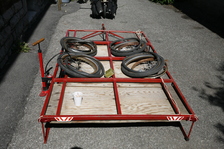 repairing 4 flats...
repairing 4 flats...
No, it wasn't powered by a noisy smelly generator like some of the floats were using. That would be a little bit at odds with the theme of "Human Powered Vehicles". It was an industrial grade C-Power Products (Inc., Rockwall, TX) VPS-1500 computer UPS (Uninterruptible Power Supply) with 2 battery packs. Each VPS-BatPak 1500 battery pack contains 7 sealed lead-acid Panasonic LCR127R2P 12-volt, 7.2 ampere-hour batteries making an 84-volt, 16 A DC, 600 watt-hour pack. I ended up using 20A 250V L6-20 twist-lock AC connectors to connect the UPS battery packs in safely, securely and conveniently.
The Hammond C3 draws 72 watts for the organ and preamp. The Leslie 251 amp draws 200 watts plus the tremolo motor draw. There was also a 60 watt lamp inside the organ to keep the tone generator warm. Total draw is estimated at 332 watts.
With these numbers, it should have lasted a little more than 3 hours. Since it was -1C (as opposed to +25C, decreasing the available power) and one set of batteries was not new, it is not surprising that it lasted only 2 hours and 40 minutes.
The Hammond C3 weighs 450 pounds including the foot pedals and bench. The Leslie 251 weighs about 150 pounds. The organist weighs about 150 pounds. The UPS with batteries weighs about 150 pounds. The trailer weighs about 100 pounds. My guess is 1000 pounds total.
About the Leslie, Mark
Rehder had this to say:
"The whirling sound is created by the
Leslie speaker cabinet. There is a double horn for the high
frequencies that literally spins around like a top, throwing the sound
around. The woofer is stationary, but has a curved baffle that spins
around it, again throwing the sound. Hammonds without this set-up sound
pretty flat and monotonous after a while. Modern synthesizers try
various tricks to get this sound, and some are close. But the best
compromise I've heard is one of the Hammond or Korg organ-synths routed
through a small Leslie-style cabinet where at least the top speaker
still has some sort of rotational thing happening. You just can't get
that sound without resorting to multiple speakers and some kind of
surround-sound programming. Even then, it's just not the same thing."
2010-08-08: Richard has just acquired a 1960 Hammond M3 which should fit the front of the trailer.
As a footnote... I bumped into a true human powered organ
There is a group in Boston that have built a large bike trailer that I don't think I would trust with a Hammond organ...
Other missions with the big-ass organ trailer:
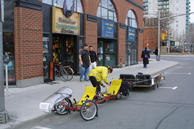 cleaning out friends' apartment after a move
cleaning out friends' apartment after a move
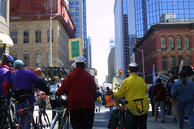 carrying 8 drummers in a peace rally (3/4 ton?)
carrying 8 drummers in a peace rally (3/4 ton?)
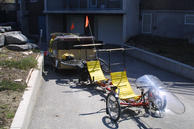 preliminary load to moving a 3-bedroom apartment
preliminary load to moving a 3-bedroom apartment
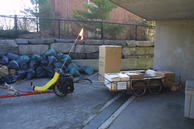 preliminary load to moving a 3-bedroom apartment
preliminary load to moving a 3-bedroom apartment
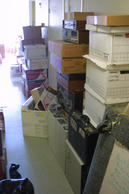 moving a 3-bedroom apartment
moving a 3-bedroom apartment
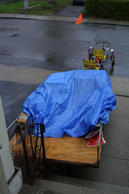 carrying a "small" load of 3 computers
carrying a "small" load of 3 computers
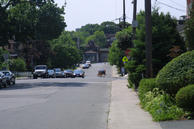 Jody fetches a load of 6 hay bales for a local community garden, delivers a load of bikes to a bike recycler and fetches an extension ladder (more photos from Jody when scanned...)
Jody fetches a load of 6 hay bales for a local community garden, delivers a load of bikes to a bike recycler and fetches an extension ladder (more photos from Jody when scanned...)
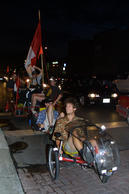 portable patio for Canada Day fireworks viewing
portable patio for Canada Day fireworks viewing
 trailer used to retrive bikes for NCC display
trailer used to retrive bikes for NCC display
 trailer demonstrated at NCC public display
trailer demonstrated at NCC public display
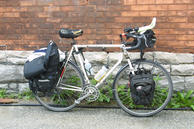 trailer used for hauling a load of funny bikes back from an NCC display
trailer used for hauling a load of funny bikes back from an NCC display
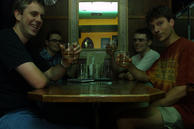 Jody and RGB return the load of funny bikes to Mike Watson
Jody and RGB return the load of funny bikes to Mike Watson
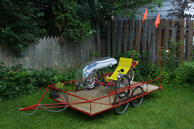 possibilities of transporting the trike on the trailer itself
possibilities of transporting the trike on the trailer itself
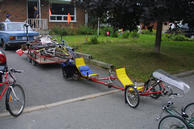 transporting bike parts across town
transporting bike parts across town
 Symposium for Sustainability, Carleton University
Symposium for Sustainability, Carleton University
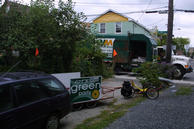 election advertising
election advertising
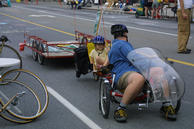 Car-Free Day trailer surfing
Car-Free Day trailer surfing
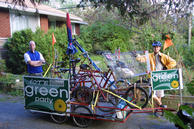 show bike transport during an election
show bike transport during an election
 quick work of transporting a 19" equipment rack
quick work of transporting a 19" equipment rack
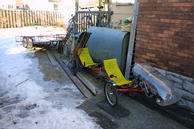 St. Patrick's Day parade with couch and chair
St. Patrick's Day parade with couch and chair
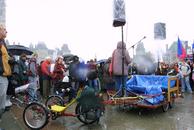 fairly high powered mobile PA platform (more, more, more)
fairly high powered mobile PA platform (more, more, more)
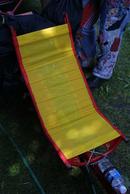 Pride Parade with full swingset (more photos and more and even more... and yet more...)
Pride Parade with full swingset (more photos and more and even more... and yet more...)
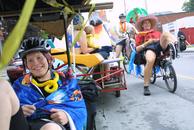 beach parade with canoe, parasol, kiddie pool, slide, 2 enormous penguins
beach parade with canoe, parasol, kiddie pool, slide, 2 enormous penguins
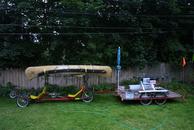 skeleton of the beach trip with canoe, parasol and rack'n'roll
skeleton of the beach trip with canoe, parasol and rack'n'roll
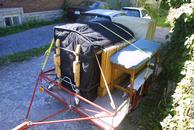 moving a packed organ (Hammond A101) with Leslie speaker
moving a packed organ (Hammond A101) with Leslie speaker
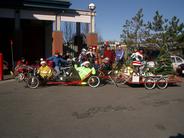 Help Santa Toy Parade
Help Santa Toy Parade
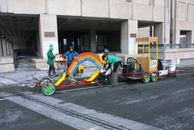 award-winning St. Patrick's Day Parade entry with "Pedal Pub" complete with W/C (more photos)
award-winning St. Patrick's Day Parade entry with "Pedal Pub" complete with W/C (more photos)
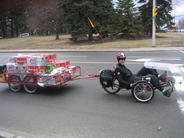 "running on empties" returning 40 cases of beer bottles.
"running on empties" returning 40 cases of beer bottles.
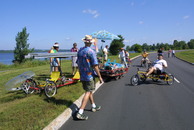 2nd annual beach parade with extension ladder, parasol, kiddie pool, slide
2nd annual beach parade with extension ladder, parasol, kiddie pool, slide
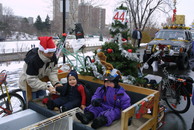 2005 Ottawa Santa Claus parade
2005 Ottawa Santa Claus parade
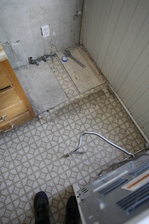 Moving RGB (2 stoves and 2 fridges, plus a dozen bikes)
Moving RGB (2 stoves and 2 fridges, plus a dozen bikes)
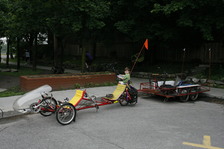 Moving Greg
Moving Greg
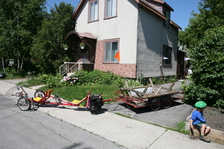 Moving picnic table and random garage sale furniture
Moving picnic table and random garage sale furniture
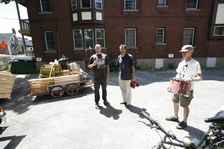 Moving Mark
Moving Mark
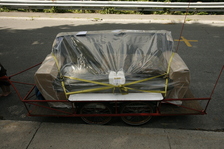 Bringing home a new sofa-bed
Bringing home a new sofa-bed
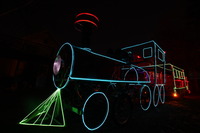 It was turned into a steam locomotive with passenger car and
caboose
with a real train horn
for the 2010 Ottawa Santa Claus Parade and made at least
another half dozen appearances for other events up to June.
It was turned into a steam locomotive with passenger car and
caboose
with a real train horn
for the 2010 Ottawa Santa Claus Parade and made at least
another half dozen appearances for other events up to June.
Please feel welcome to email Richard Guy Briggs for explanations or details of what is documented above.
